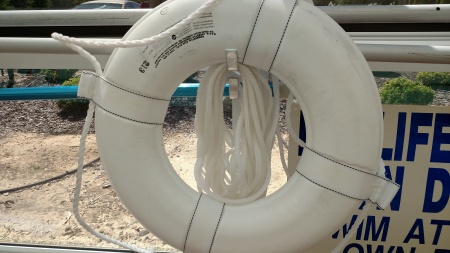When I began an exercise routine of swimming a few years ago, I had to push past my many excuses for not going to the pool in the morning. Excuses like bad weather and feeling tired kept me at home on many occasions when I should have been doing something to improve my physical condition. I finally worked through the challenges by coming up with a plan to ease into the new routine. With my final goal in mind, I made incremental changes and adjusted as needed to begin to see results. Today, I look back and realize starting the journey was most of the battle. I had to find the courage to take the early morning dive into the water and then immerse myself in the exercise.
Teachers who are trying to innovate in the classroom face the same challenge. They have to find the courage to take the plunge when they have a big idea that could bring about great results for students. At my pool, there are many danger signs including one that says, “No lifeguard on duty. Swim at your own risk.” The danger of jumping in and trying something is scary when you’re not sure that you have the support. Without that support system, you may be unable to take on new challenges that can benefit students.
The statistics on teacher retention are shocking. A study published by the Alliance for Excellent Education reports that between 40-50% of teachers quit within five years. Typical reasons cited for leaving include lack of administrative support and the feeling of isolation. Under these conditions, how can schools encourage innovation?
A recent discussion with colleagues unearthed some of the roadblocks that teachers face in a typical week including red tape and fear of failure. Below are some of the ideas that we discussed for removing those roadblocks.
- Provide teachers with more time to work in teams to discuss existing problems and develop innovative solutions. A teacher in our district innovation incubator has created a successful passion-based learning program and cites the extended planning time as essential to her team’s success.
- Establish of culture in which trying something new is celebrated and failure is viewed as a stepping stone to success. An innovation team in my district has been working to develop a mastery-based grading system. They tried several prototypes that didn't work well but kept on making changes until they had a successful model.
- Take down boundaries by establishing a flat leadership model where all ideas and suggestions are valued. Allow teachers to “pitch” their ideas to leadership and then give them the autonomy to try new strategies. Encouraging cross-disciplinary teams is a powerful way to develop good ideas.
- Create a work environment that inspires creativity and collaboration. Several schools in my district have created central collaboration areas where everyone in the school can come to share ideas. Give them space to develop “project nests” where their work can be transparent to everyone in the school.
- School leaders need to be the safety net for teachers and protect them from adverse consequences. Most rules and regulations were created as a result of a few people doing something wrong. Cut through the red tape that often gets in the way of innovation and allocate seed funding, time and support for teams to put their ideas into action. You’ll be on the road to to transformation before you know it!

No comments:
Post a Comment